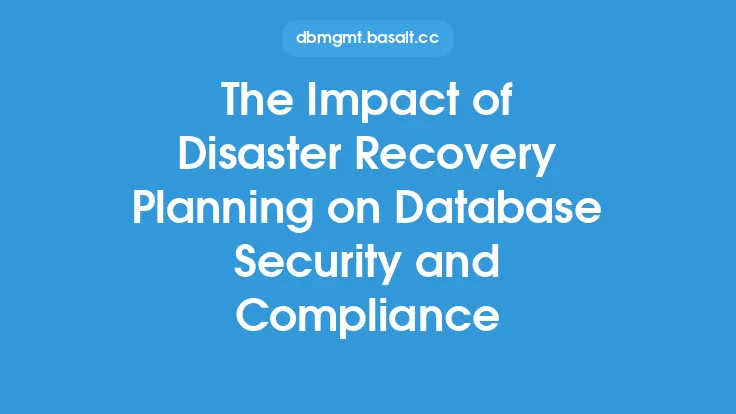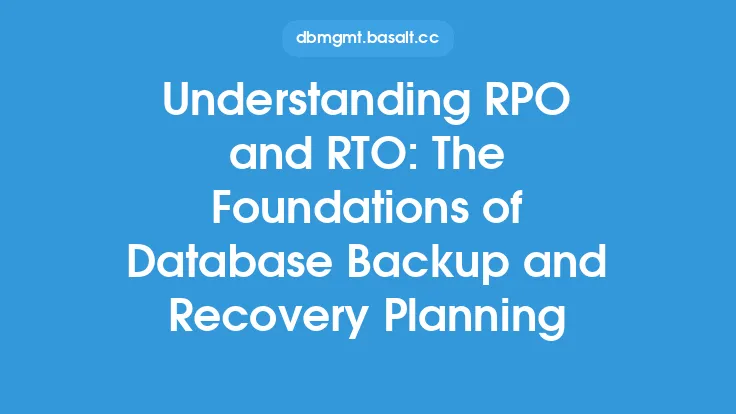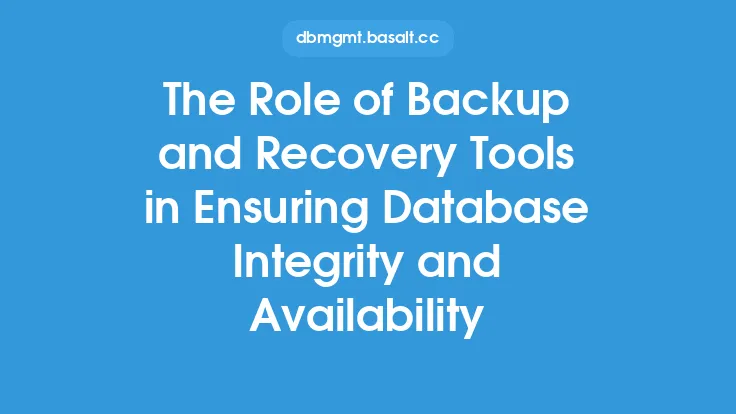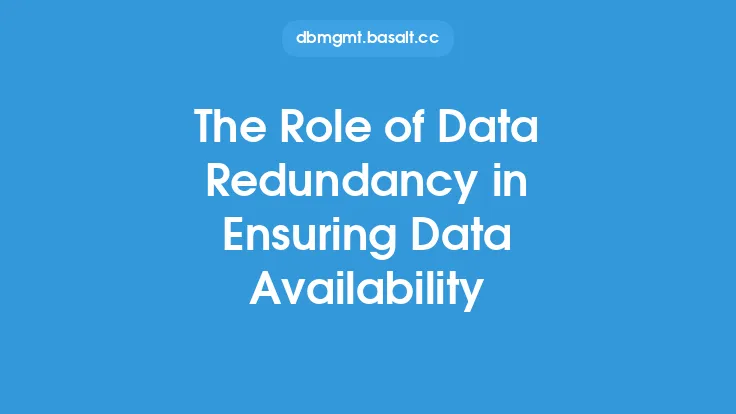Disaster recovery planning is a critical aspect of database management, and risk assessment plays a vital role in this process. Risk assessment is the process of identifying, analyzing, and prioritizing potential risks that could impact an organization's database and overall operations. In the context of disaster recovery planning, risk assessment helps organizations understand the likelihood and potential impact of various disasters, such as natural disasters, cyber-attacks, or equipment failures, and develop strategies to mitigate or respond to these risks.
Introduction to Risk Assessment
Risk assessment is a systematic process that involves identifying potential risks, assessing their likelihood and potential impact, and prioritizing them based on their severity. In the context of disaster recovery planning, risk assessment helps organizations identify the most critical risks that could impact their database and overall operations. This process involves gathering data and information about potential risks, analyzing this data to determine the likelihood and potential impact of each risk, and prioritizing risks based on their severity.
Types of Risks in Disaster Recovery Planning
There are several types of risks that organizations should consider when developing a disaster recovery plan. These include natural disasters, such as earthquakes, hurricanes, and floods, as well as man-made disasters, such as cyber-attacks, equipment failures, and human error. Organizations should also consider the potential impact of these risks on their database and overall operations, including the potential for data loss, system downtime, and reputational damage.
The Risk Assessment Process
The risk assessment process involves several steps, including risk identification, risk analysis, and risk prioritization. Risk identification involves gathering data and information about potential risks, while risk analysis involves assessing the likelihood and potential impact of each risk. Risk prioritization involves prioritizing risks based on their severity, with the most critical risks receiving the highest priority. This process helps organizations focus their disaster recovery planning efforts on the most critical risks and develop strategies to mitigate or respond to these risks.
Risk Assessment Techniques
There are several risk assessment techniques that organizations can use to identify and prioritize potential risks. These include the National Institute of Standards and Technology (NIST) risk assessment framework, the International Organization for Standardization (ISO) 27005 risk assessment standard, and the Federal Emergency Management Agency (FEMA) risk assessment methodology. These techniques provide a structured approach to risk assessment and help organizations ensure that their risk assessment process is comprehensive and effective.
Benefits of Risk Assessment in Disaster Recovery Planning
Risk assessment provides several benefits in disaster recovery planning, including improved risk awareness, enhanced decision-making, and more effective resource allocation. By identifying and prioritizing potential risks, organizations can develop strategies to mitigate or respond to these risks and reduce the potential impact of disasters on their database and overall operations. Risk assessment also helps organizations ensure that their disaster recovery plan is comprehensive and effective, and that they are prepared to respond to a wide range of potential risks.
Challenges and Limitations of Risk Assessment
While risk assessment is a critical component of disaster recovery planning, there are several challenges and limitations to this process. These include the complexity of the risk assessment process, the need for specialized expertise and resources, and the potential for uncertainty and ambiguity in risk assessment results. Organizations should be aware of these challenges and limitations and take steps to address them, such as providing training and support for risk assessment teams and using risk assessment tools and techniques to streamline the risk assessment process.
Best Practices for Risk Assessment in Disaster Recovery Planning
There are several best practices that organizations can follow to ensure that their risk assessment process is effective and comprehensive. These include establishing a risk assessment team with the necessary expertise and resources, using a structured risk assessment methodology, and prioritizing risks based on their severity. Organizations should also regularly review and update their risk assessment results to ensure that they remain relevant and effective, and that their disaster recovery plan is aligned with their overall business strategy and objectives.
Conclusion
Risk assessment is a critical component of disaster recovery planning, and organizations should prioritize this process to ensure that their database and overall operations are protected from potential risks. By understanding the types of risks that could impact their organization, using risk assessment techniques and methodologies, and following best practices for risk assessment, organizations can develop a comprehensive and effective disaster recovery plan that reduces the potential impact of disasters and ensures business continuity.





